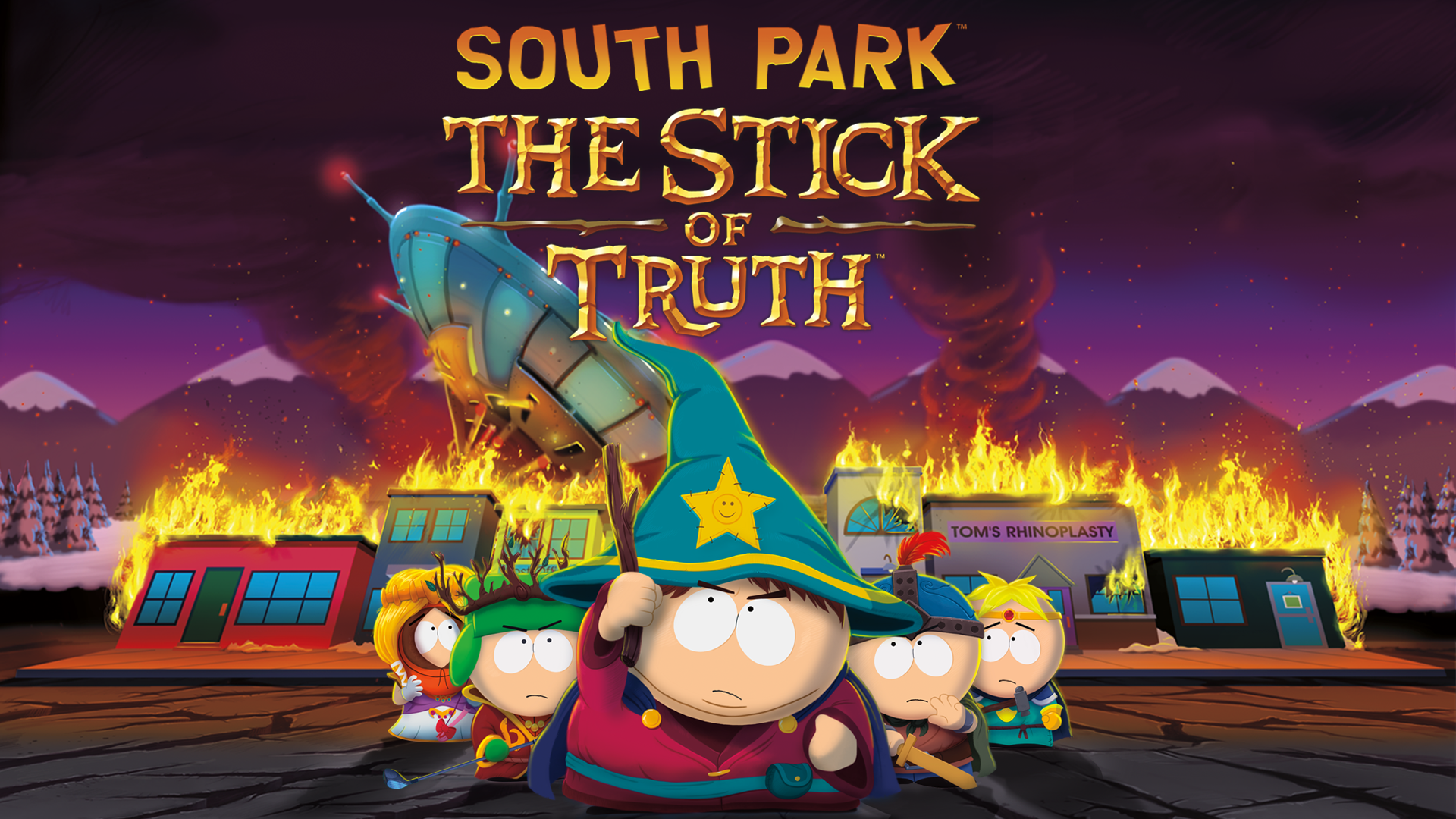This guide is for educators. It aims to assist you with teaching about South Park: The Stick of Truth in a classroom setting. The goal is to provide resources and ideas for thoughtful discussion. Let's begin exploring potential pedagogical applications.
Understanding the Game's Core Themes
South Park: The Stick of Truth, released in 2014, is a role-playing game. The game is based on the animated sitcom South Park. Its satirical humor is central to the experience. Themes of childhood, fantasy, and identity play a significant role.
Understanding these themes is crucial. The game parodies fantasy tropes. It also satirizes social issues through a juvenile lens. Students may find the game's content shocking or offensive. It is important to contextualize the content within the larger satirical framework.
Fantasy Role-Playing and Genre Parody
The game borrows heavily from fantasy RPGs. Think Dungeons & Dragons and Lord of the Rings. Characters assume familiar roles like warriors, mages, and rogues. The "Stick of Truth" itself is a MacGuffin. These elements provide ample opportunities for parody.
Educators can use the game to explore genre conventions. Discuss how the game subverts these conventions for comedic effect. Compare and contrast the game's depiction of fantasy with more traditional examples. Students could analyze how the game uses humor to critique these established tropes.
Social Commentary and Satire
South Park is renowned for its social commentary. The game satirizes various aspects of contemporary society. Politics, religion, and popular culture are all targeted. Racial stereotypes are also present in the game. These are often employed for comedic exaggeration.
Discuss the intent behind the satire. What messages is the game trying to convey? Is the satire effective or does it reinforce harmful stereotypes? Encourage students to critically analyze the game's social commentary and consider its potential impact.
Addressing Sensitive Content
South Park is known for its controversial content. The game is no exception. Expect depictions of violence, drug use, and sexual themes. Some content might be deemed offensive or inappropriate. Prepare to address these issues head-on.
Establish clear ground rules for discussion. Emphasize the importance of respectful and thoughtful engagement. Provide a safe space for students to express their opinions and concerns. Acknowledge the potential for discomfort and encourage empathy.
Contextualizing Humor
The humor in South Park is often shocking and offensive. However, it is often intended to be satirical. Understanding the context is key. Discuss the role of exaggeration and irony in the game's humor. Ask students to identify the targets of the satire.
Encourage students to distinguish between humor and endorsement. Just because something is funny does not mean it is acceptable. Analyze the ethical implications of the game's humor and its potential to perpetuate harmful stereotypes. This is especially important considering the age of the characters portrayed and their role in the game's plot.
Navigating Potentially Offensive Themes
The game tackles sensitive topics like race, religion, and sexuality. These topics can be difficult to discuss. Approach them with sensitivity and awareness. Provide historical context and relevant background information.
Encourage students to consider different perspectives. Facilitate a discussion about the impact of stereotypes. Explore the historical and social context of the issues being satirized. This will help students to understand the complexities of these issues and the potential for harm.
Classroom Activities and Discussion Prompts
There are many ways to incorporate South Park: The Stick of Truth into the classroom. Consider the following activities and discussion prompts. These activities are designed to promote critical thinking and engagement.
Remember to adapt these ideas to suit your students' needs and interests. Encourage creativity and experimentation. The goal is to foster a deeper understanding of the game's themes and messages. Make sure you check your school policy on this game as the content is very risque.
Character Analysis
Have students analyze the game's characters. Focus on their motivations, relationships, and development. How do the characters embody or subvert common stereotypes? How does their behavior contribute to the game's overall satire?
Compare and contrast the characters in the game with their counterparts in the South Park television series. Analyze how the game adapts and expands upon the characters' personalities and backstories. Consider the role of character archetypes in the game's narrative. Also consider the role of the player character in shaping these relationships.
Narrative Deconstruction
Examine the game's narrative structure. How does the story unfold? What are the major plot points? How does the game use humor to advance the plot? Consider the role of the player in shaping the narrative.
Analyze the game's use of foreshadowing, irony, and suspense. Discuss the themes that are explored through the narrative. Encourage students to consider the game's overall message or moral. Also consider the historical and cultural context of the game's narrative.
Satirical Analysis
Identify the targets of the game's satire. What social issues are being addressed? How effective is the satire? Does it challenge or reinforce existing power structures?
Research the historical and social context of the issues being satirized. Compare and contrast the game's satire with other examples of satirical works. Consider the ethical implications of the game's satire and its potential impact on viewers. This is crucial to understanding the purpose of the satire presented in the game.
Common Misconceptions
Students may have certain misconceptions about the game. It is important to address these misconceptions directly. Clarifying these issues can help prevent misunderstandings and promote a more nuanced understanding.
Be prepared to answer questions and address concerns. Provide evidence and examples to support your explanations. The goal is to help students think critically about the game and its themes.
The Game Endorses Offensive Behavior
A common misconception is that the game endorses offensive behavior. This is not necessarily true. The game often satirizes such behavior. It uses humor to highlight the absurdity and harmfulness of certain attitudes and actions. It's important to emphasize that satire is not endorsement. The game often uses exaggeration and absurdity to make its points. This does not mean that the game is advocating for the behaviors it depicts.
Encourage students to look beyond the surface level and consider the underlying message. Analyze the game's use of irony and sarcasm. Discuss the potential consequences of the behaviors being satirized. This will help students to understand the game's intent and to avoid misinterpreting its message. Also, remind students that entertainment is not always intended to be a role model. It can be thought-provoking, and a learning tool.
The Game is Just Mindless Entertainment
Some students might view the game as simply mindless entertainment. While it is certainly entertaining, it also contains complex themes and messages. The game can serve as a platform for critical thinking and discussion. The game's satirical nature forces players to engage with social issues. It can spark conversations about ethics, politics, and culture.
Encourage students to look beyond the surface level and explore the game's deeper meaning. Analyze the game's use of symbolism and allegory. Discuss the themes that are explored through the narrative. This will help students to appreciate the game's intellectual value and to see it as more than just mindless entertainment.
Conclusion
Teaching about South Park: The Stick of Truth can be challenging. However, it can also be rewarding. It offers a unique opportunity to engage students in critical thinking. You can explore complex social issues through a popular medium. Remember to be prepared to address sensitive content. Encourage respectful and thoughtful discussion. This will help you to create a learning environment that is both engaging and enriching.
By using the strategies and resources outlined in this guide, educators can successfully integrate South Park: The Stick of Truth into their curriculum. The game can also provide a valuable platform for exploring important themes and promoting critical thinking skills. Good luck and embrace the potential for a thought-provoking learning experience!


